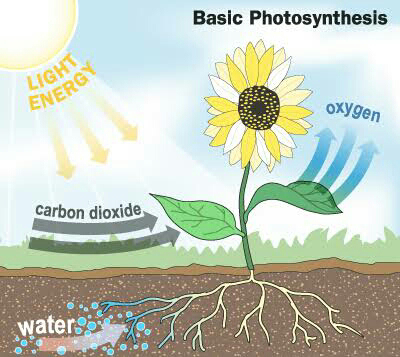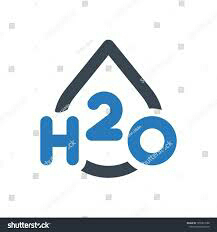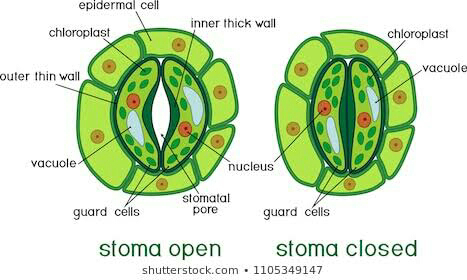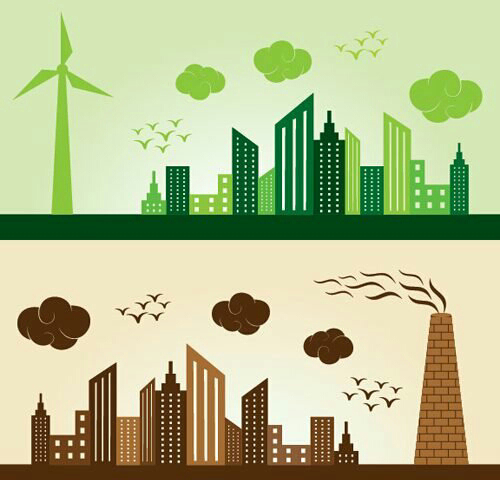Nutrition (Life processes)
Nutrition: Nutrition is the process of producing food/intake of nutrients and their further utilisation.
* Food of an organisam is made of molecules like carbohydrates, fats and proteins.
* Carbohydrates and fats provide energy and proteins are require for body building, repair and maintenance.
* Enzymes are biological catalysts used to breakdown complex food substances into simpler ones which cells take up for their growth.
E.g: carbohydrates, Fats and Proteins.
2)Micronutrients : They do not provide energy, but their deficiencies can cause specific diseases and abnormalities.
E.g: vitamens and Minerals.
Autotrophic Nutrition: It is the process by which organisms can synthesise organic food materials from inorganic raw materials.
* It is the process by which autotrophs take in raw materials from the environment and convert them into stored forms of energy.
E.g: Green plants and some bacteria.
* Green plants can prepare their own food by the process of Photosynthesis, hence they are called "Autotrophs" or producers.
* Photosynthesis is a process by which green plants synthesise carbohydrates from carbon dioxide and water using solar energy with the help of Photosynthetic pigments.
* The Carbohydrates (glucose) produced forms starch which is the storage food in plants.
Signicance of photosynthesis : Photosynthesis is an anabolic process by which primary producers synthesise food. Plants help in purification of the atmospheric air, by consuming CO2 and giving evolving Oxygen.
Requirements for phosynthesis :-
1)sunlight,
2)chlorophyll,
3)Carbon dioxide
4)Water
1)Sunlight :- The natural source of light for phosynthesis is Sun. Visible/White light from the electromagnetic spectrum, which has a wavelength of 380nm to 760nm is absorbed by photosythetic pigments present in green plants.
2) Photosynthetic pigments:- These are chlorophyll and other accessory pigments including carotenoids (carotenoids and Xanthophyll) which absorb light in the visible range. Chlorophyll-a and b absorb blue and red light and reflect green light.
3)Carbon dioxide:- All plants need carbon dioxide to form glucose. The atmospheric air is thr source of Carbon dioxide which is used by the plants. In the terrestrial plants, there are tiny pores present on the surface of leaves through the CO2 enters.
4) Water :- Water is another necessary component for phosynthesis. Water splits into hydrogen and oxygen with in chloroplasts in the presence of solar light.
Mesophyll tissue is the ground tissue of the leaf and lies between the two epidermal layers along with veins. It is a parenchymatous green tissue and it is usually differentiated into two regions :- the upper palisade parenchyma and the lower spongy parenchyma. Mesophyll tissue has abundant chloroplasts in them.
Site of photosynthesis :- Chloroplast
*Chlorophyll :- These plastids are green in colour due to the presence of green pigment, chlorophyll. Two distinct areas of chchloroplast are Stroma and Grana.
*Stroma:- The dark reaction of photosynthesis take place in the matrix of chloroplast called Stroma.
*Grana :- The light reactions of photosynthesis
take place in this part of chloroplast where a large number of
lamellae remains arranged like a stack of coins within the
chloroplast which are called as "thylacoids", which contain
chlorophyll pigments.
kidneys shaped or bean-shaped guard cells.
*Functions of Stomata: - Gaseous exchange predominantly takes
place in the leaves through stomata. Exchange of gases also occurs
across the surface of stem, root and leaves.
*Guard Cells :- These are bean-shaped cells which cover single
stoma. They are the only epidermal cells which contain chloroplast.
They perform photosynthesis and also regulate the opening and
closing of the stoma.
The guard cells swell due to the
inward movement of water, the
stomata get opened, and it gets
closed when the guard cells
become flaccid due to the loss
of water.
During photosynthesis the following events occur :-
(i)Absorption of light energy by chlorophyll.
(ii) Conversion of light energy into chemical energy and splitting of a
water molecule into hydrogen & oxygen.
(iii) Reduction of CO2 to carbohydrates.
All these events can be categorised into two main phases: -
(A) Light phase (B) Dark phase
*Some mineral salts like Nitrogen, Phosphorus, Iron, Magnesium
required by the plants are also transported to different parts of
the plant along with the water.
*Nitrogen is an essential element used in the formation of proteins
and other biomolecules (chlorophyll, DNA and RNA). Nitrogen is
consumed in the form of inorganic nitrates or nitrites prepared
by symbiotic bacteria from atmospheric N2.
Summery :-
• Nutrition is the procurement and utilisation of nutrients.
• In Autotrophic nutrition, organisms synthesise their own food.
E.g., Green plants and Cyanobacteria.
• Photosynthesis is the process by which green plants synthesise carbohydrate from carbon dioxide and water using solar energy
with the help of chlorophyll pigments.
• Guard cells regulate the opening and closing of the stomata and also perform photosynthesis.
• Reactions of photosynthesis occur in 2 phases: Light-dependent phase and light-independent phase.
• Energy is produced in light-dependent reaction and utilised in
light-independent reaction.
Heterotrophic nutrition:- It is the process by which organisms consume materials to digest and extract nutrition from it.
Heterotrophic nutrition is of three types depending upon the mode
of obtaining food :
The mode of nutrition in which solid food material is consumed is
called holozoic nutrition.
e.g. All animals.
It contains the following steps: -
1. Ingestion: Intake of complex organic food through the mouth
opening.
2. Digestion: Breakdown of complex food into simple diffusible form
by the action of enzymes.
3. Absorption: Absorption of simple, soluble nutrients by blood or
lymph.
4. Assimilation: Utilisation of this absorbed food for growth and
development.
5. Egestion: Expelling out the undigested food.
The mode of nutrition where the organisms obtain their food from
dead and decaying organic substances. Organisms are also called saprotrophs.
Example: Bacteria, Fungi and many more.
The mode of nutrition where an organism (called parasite) derive its
food from another living organism (host) is called parasitic nutrition.
Examples include ticks, lice, Tapeworm, Ascaris, Plasmodium, Liver flukes, Cuscuta and many more.
Mode of Obtaining Food in Organisms.
● Amoeba takes in food using cytoplasmic extensions called
pseudopodia which engulf the food particle forming a food-
● Within the food vacuole, complex substances are broken down
into simpler ones which diffuse into the cytoplasm. The remaining
undigested substances are moved to the surface of the cell and
expelled.
● In Paramecium, a unicellular
organism, the cell has a
definite shape and food is
taken in through a specific
spot. Movement of food to this
spot occurs by the movement
of cilia which cover the entire
surface of the cell.
• The alimentary canal is a long tube that extends from the mouth
to the anus.
• The alimentary canal starts with the mouth, which leads to the
buccal/oral cavity.
• Inside the buccal cavity, there is Teeth, Tongue and Palate.
• The palate forms the roof of the buccal cavity.
• Processing of food in the digestive system inside the system
• Teeth are of following types:
(i) Incisors: Biting the food.
(ii) Canines: Wearing and tearing of food.
(iii) Premolars: Crushing and grinding the food.
(iv) Molars: Crushing and grinding the food
• Food is also mixed thoroughly with saliva and tongue helps in
moving the food around the mouth while chewing.
• Saliva is secreted by the salivary glands to help in the process of
digestion.
• Process of digestion is done with the help of biological catalysts
called enzymes.
• An enzyme Salivary amylase (ptyalin) is present in saliva to
breakdown starch into maltose and long glucose repeats.
cavity. It remains attached on it is under the surface to the floor by
the fold of mucous membrane called the lingual frenulum.
• Functions of the tongue:
(i) It acts as a spoon during the ingestion of food.
(ii) It helps in process of chewing or mastication.
(iii) It helps in mixing the food with saliva.
(iv) It helps in swallowing.
(v) It helps in cleaning teeth to remove small food particles from theirsurface.
(vi) It helps in speech.
(vii) It has receptors for taste.
(ix) In dogs during panting, it allows thermoregulation by quick
evaporation of the water of saliva.
Quoting NCERT "Dental caries or tooth decay causes gradual
softening of enamel and dentine. It begins when bacteria acting on
sugars produce acids that soften or demineralises the enamel.
Masses of bacterial cells, together with food particles, stick to the
teeth to form dental plaque. Saliva cannot reach the tooth surface to
neutralise the acid as plaque covers the teeth. Brushing the teeth
after eating removes the plaque before the bacteria produce acids. If untreated, microorganisms may invade the pulp, causing inflammation and infection."
The buccal cavity connects into a short narrow chamber called
pharynx or throat. The pharynx serves two ways –
(i) It acts as an air passage between nose and windpipe (trachea).
(ii) It also acts as a food passage between the buccal cavity and
oesophagus.
Oesophagus (food pipe): The oesophagus is a flexible muscular tube 25-30 cm long, leading from the pharynx to the stomach which
conducts food by peristalsis. It runs down the neck, behind trachea
through the thorax, finally piercing the diaphragm to open into the
stomach.
alimentary canal with a series of wave like contractions.
• The stomach is a thick, muscular and J-shaped organ and also the
widest part of the alimentary canal which expands when food
enters it.
• The stomach can be distinguished into three regions – Fundic, Body and Pyloric parts. The pyloric lower end of the stomach narrows into the duodenum. A pyloric sphincter regulates the exit.
• The function of digestion is done by
digestive juices secreted by gastric
glands which secrete hydrochloric acid, a protein-digesting enzyme called pepsin and mucus.
• The mucus protects the inner lining of the stomach from the acidic conditions.
• Food is thoroughly mixed with digestive juices with the help of
muscles of stomach help in mixing the food thoroughly with
digestive juices. Sphincter muscles regulate the movement of
food by releasing small amounts into the small intestine.
• The small intestine, the longest part of the alimentary canal, is
compactly arranged due to its extensive coiling.
• The Small Intestine is longer in herbivores in comparison to
carnivores because cellulose requires more time to be digested,
and meat is easier to digest.
• It is the site of the complete digestion of macromolecules. It
receives secretions of the liver and pancreas for aid in digestion.
• Bile juice from the liver accomplishes the change of medium into alkaline in addition to acting on fats. The alkaline medium is
necessary as enzymes in small intestine require an alkaline
medium for its activity. Bile salts break the large fat globules downinto smaller globules, thereby increasing the efficiency of enzyme
action. This process is known as emulsification of fats.
• The pancreas secretes pancreatic juice, which composes of enzymes like trypsin helping in digesting proteins and lipase for digesting emulsified fats.
• The walls of the small intestine house glands which produce and
secrete intestinal juice.
• The enzymes in it convert the proteins to amino acids, fats into
fatty acids, glycerol and complex carbohydrates into glucose. The
digested food is absorbed up by the walls of the intestine.
the small intestine, which increases the active surface area for
absorption. The villi are thoroughly supplied with blood vessels
which take the absorbed food to every cell of the body where it is
used for producing energy and building up new tissues and the
repairment of old tissues.
• The remaining unabsorbed food is transferred to the large
intestine where more villi absorb water. The remaining of the
material is excreted from the body via the anus.
• The anal sphincter regulates the exit of this waste material.
Summary:-
• Heterotrophic nutrition is of three types based on the mode of
obtaining food: Parasitic, Saprophytic and Holozoic.
• Five steps in holozoic nutrition are Ingestion, Digestion,
Absorption, Assimilation and Egestion.
• Amoeba takes in food using cytoplasmic extensions called
pseudopodia which engulf the food particle.
• The alimentary canal is a long tube that extends from the mouth
to the anus.
• The mouth leads to the oesophagus, which leads to a J-shaped
organ called stomach.
• Stomach leads to coiled small Intestine and large Intestine, which
ends in the anus.
• Sphincters are muscles which regulate the movement of food
through the alimentary canal.
• The site of the complete digestion of macromolecules is the small intestine.
• Numerous finger-like projections are present in the inner lining of the small intestine, which increases the surface area for absorption.
• Salivary glands are three pairs, and they secrete saliva which contains enzyme for the digestion of starch.
• The liver is the largest digestive gland which produces bile. Bile
helps in emulsification of fats.
• The pancreas produces pancreatic juice which contains enzymes





























Hai please support me
ReplyDeleteThe best blog every I saw on life process
ReplyDeleteThak you please follow me then my every post will get net notified in your phone
DeleteNice Explaination
ReplyDeleteThank you plz follow me
Deletehelllo kanishka. i like your blogs. superb.
ReplyDeleteNice explanation
ReplyDelete